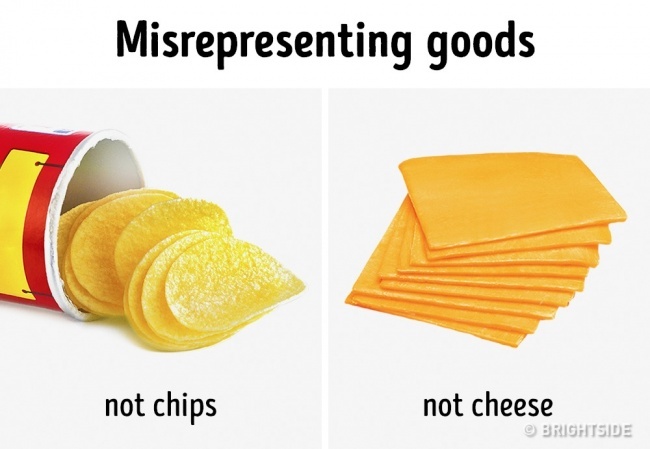several ways we’re tricked into spending much more than we initially intended.
The simplest of goods sometimes return in glory after a rebranding. Will the modern youth buy ordinary cakes and take pictures of them for Instagram? Not at all. However, if you slightly changed the recipe, update their looks, and turn them into fancy muffins or cupcakes, the humble cake would gain a second wind.

Here’s how restaurants compose their menus:
- Use of family images. Family and childhood associations arouse good memories. When ordering “Grandma’s soup“ we subconsciously expect it to carry us into our childhood.
- Appetizing descriptions make our food reflexes react. How can anyone resist after reading about ”fresh hot bread with a crispy crust"? Especially if it’s from Provence.
- Placement. The upper part of the menu is the place where you look first. That’s why restaurants put the most delicious-looking — and most expensive — dishes there.
- Warm colors. Such shades arouse the appetite better.
- Price tricks. People have trouble parting with their money, and restaurants know that. That’s why they often don’t indicate the currency.
If customers consider some goods too expensive and avoid them, marketologists use this trick: they add a similar product with a higher price so that the initial one will seem cheap enough by comparison, and its sales will go up again.
One more nice move is to create a legend that will follow the product, and it doesn’t matter if it even makes sense. Milky Way, for example, made a TV commercial in the early ’90s, showing the candy bar floating in a glass of milk. Nonsense? Sure is. Yet it still became a distinguishing feature for Milky Way bars.
Merchandisers know we’re often too lazy to open up the plastic package and fetch just one bottle. And they also know many would think it a good idea to take the whole package for later use.
- We tend to associate a red price tag with a reduced cost, even though it’s not always the case: the price may remain the same, and the tag is just a bright piece of paper.
- A big cart. A well-known trick to coerce us into buying more stuff than we actually need.
- Left to right movement. Many stores are arranged so that the customers go counterclockwise. We always turn left and most frequently look at the middle of the wall to the right — exactly where merchandisers put the expiring or most expensive goods.
- Small tiles on the floor. Carts make much more noise on them, and we slow down to avoid it. This makes us spend more time at the store, taking a good look at the offers and probably buying more.

Have you ever wondered why people in chewing gum ads always take two pieces at a time? That’s a trick to make you think it’s the correct way to chew it. Meanwhile, you’ll use twice as many pieces during the same period of time, and manufacturers sell more. The same goes for certain drugs and vitamins.The text on a shampoo bottle reminding you that you can apply the shampoo twice worked similarly well some time ago.
In 1957, Henckels produced a batch of potato peelers that were so good people bought them once in a lifetime. The sales were low.Then someone came up with a genius idea to paint the devices’ handles the color of potato peel. People started accidentally throwing away the peelers with the skins, and sales went up again.Try to recall — maybe you’ve got tools with similar characteristics.
Manufacturers always try to add some "weight" to their products. For instance, they inform you that there’s exotic flower essence contained in the shampoo, even if it’s a 1:10,000 ratio, and they may disregard the actual usefulness of this flower for your hair.Another trick is to state that this shampoo is recommended by each and every stylist in Paris.
It turns out that goods for women and girls cost
7% more than similar products for men and boys, despite the only difference being their color. This phenomenon has been nicknamed "pink tax" and is due to the opinion that women are the best customers.This particularly concerns shampoos, shaving accessories, and children’s goods.
Marketing experts often manipulate terms when writing descriptions for food products. For example, the famous potato chips Pringles are
not really potato chips, with actual potato content being only 42%, which also explains their unnaturally perfect shape. The same goes for cheese, especially that in separately packed slices: the content of actual cheese is less than 51%, so the manufacturers have to label it “cheese product“, though in small letters written somewhere far away from brand names containing the word ”cheese".
courtesy: brightside

